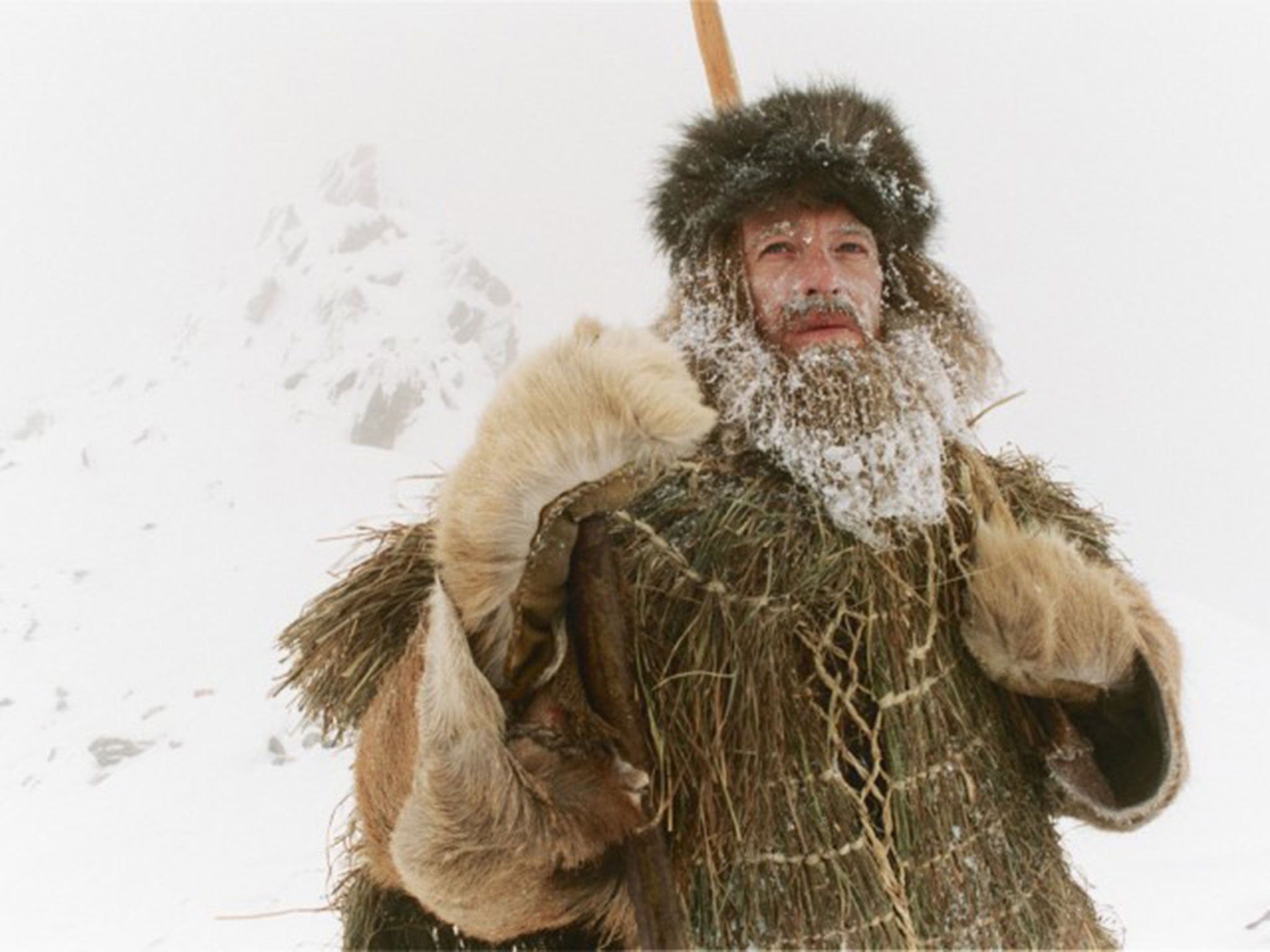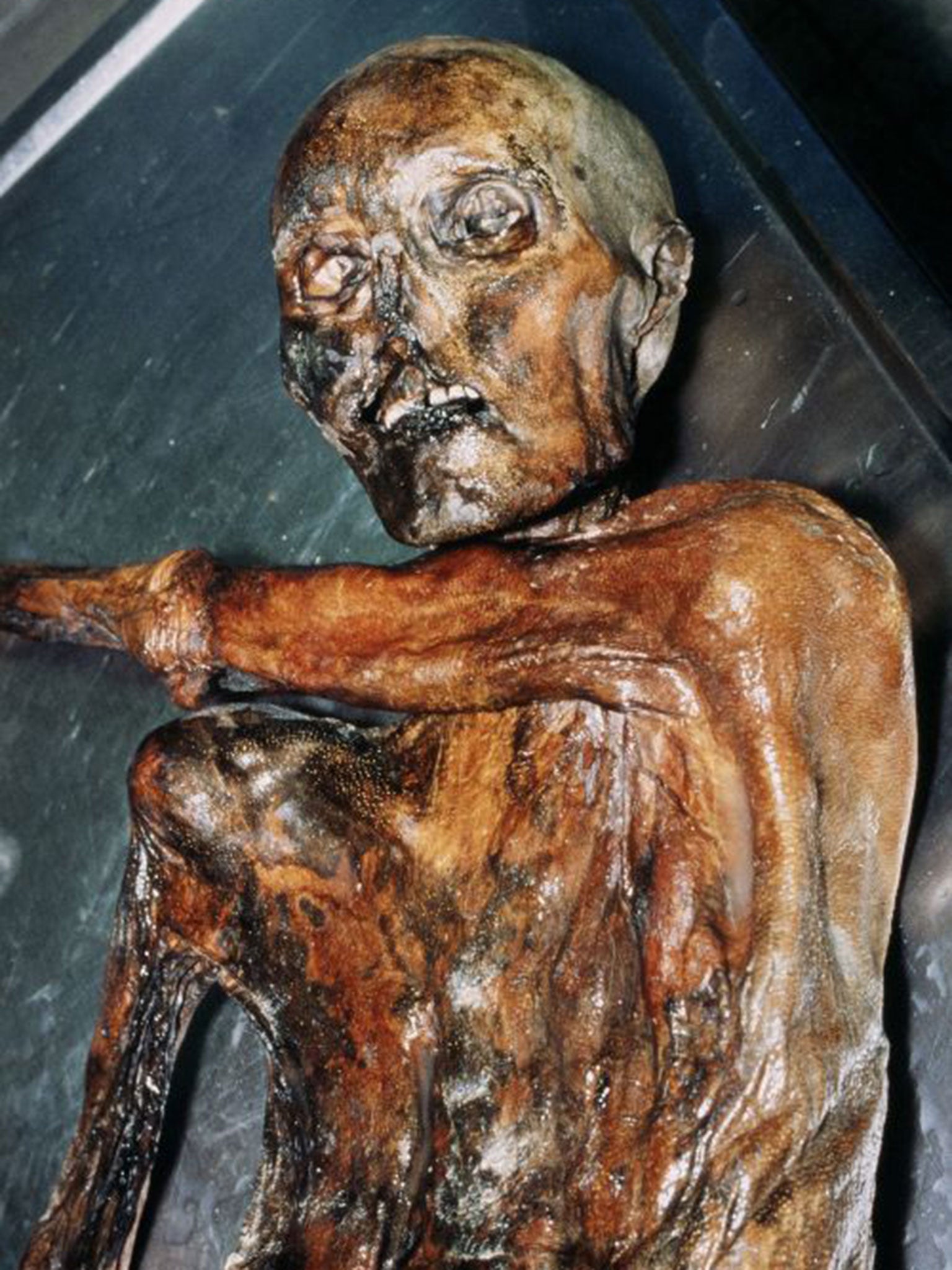Italian scientists recreate Otzi the Iceman's voice box in bid to discover how people spoke 5,000 years ago
Researchers hope to recreate Otzi's voice by constructing a model of his vocal tract with CT scans

It has been more than 5,000 years since an unfortunate encounter with another stone-age man armed with a bow and arrow saw Ötzi the iceman the South Tyrol meet his maker. And still scientists won’t leave him in peace.
Since Ötzi was found poking out of a glacier, 3,000 metres up in the Otz Valley in the Italian Alps in 1991, the “iceman” has proved a mine of information about Alpine life in the Neolithic period.
Now researchers in the provincial capital Bolzano hope to recreate his voice by constructing a model of his vocal tract with CT scans. And by recreating the “timbre and colour” of the iceman’s voice, specialists in Bolzano and Padua will get the world’s oldest mummy to “speak” stone-age vowels.
The remarkable research follows the DNA sequencing of the iceman, who rests in a sterile, glass box at 7˚C in 100 per cent humidity, the permanent star exhibit in Bolzano’s South Tyrol Museum of Archaeology.
Rolando Füstös, an ENT consultant at the city’s San Maurizio Hospital, who is leading the new project, said there were particular difficulties working with a 5,300-year-old, specially conserved body – by far the oldest mummified person ever found; those of ancient Egypt are at least 1,000 years younger.
“For a start, we can’t use MRI (magnetic resonance imaging) scans because of the condition of the mummified body,” he said.
“The other problem is the position he’s in, with his arm across his throat, which makes the CT scanning more difficult.
“But providing there are no more unforeseen difficulties, I’m fairly confident we will be able to synthesise the sound of his voice within the next few months.” After the scans are completed, the voice will be synthesised by special equipment at the National Research Council laboratories in Padua.
“Obviously we don’t know what language he spoke back then, but we will, I think, be able to reproduce the colour or timbre of his vowel sounds and show how they might be different in the way that Sicilians or people from London, say, pronounce the letter ‘a’ differently,” Dr Füstös said.

Anthropologists have already gleaned that Ötzi, who was about 5ft 5in tall, weighed about 59kg and was aged about 45 when he died, had three broken ribs, the intestinal parasite whipworm and the ulcer-causing H pylori infection in his gut, as well as signs of arterial disease.
Scientists have also pieced together his attire – a goatskin loincloth, leather leggings, a goatskin coat and a cloak of grass stitched together with animal sinews.
Ötzi might be considered ahead of his time in the style stakes. While today’s young Italians like to cover their calves, necks and knuckles in ugly spider-web tattoos, Ötzi had beaten them to it, with carbon tattoos consisting of dots and lines.
But it was the nature of Ötzi’s death that has most captured the imagination. Initially, it was thought that he froze in a blizzard.
But CT scans have since revealed that his body contained a flint-headed arrow that entered through his shoulder, rupturing the key blood vessel carrying blood from his heart to his left arm. Ötzi was murdered.
Despite the scientific finds and the good publicity for Bolzano, some people have questioned how recently someone has to have died before they’re entitled to a proper burial.
Dr Albert Zink, the scientist in charge of Ötzi’s preservation, has previously acknowledged this issue. “There has been some discussion on this,” he said, “But this man is 5,300 years old.
“We do treat him with respect; and, besides, even if we were to bury him, we wouldn’t be able to do it according to his customs because we don’t know what they were.”
And even when Ötzi speaks in the next few months, he won’t be able to tell them.
Join our commenting forum
Join thought-provoking conversations, follow other Independent readers and see their replies
Comments